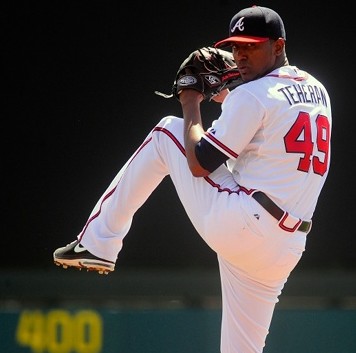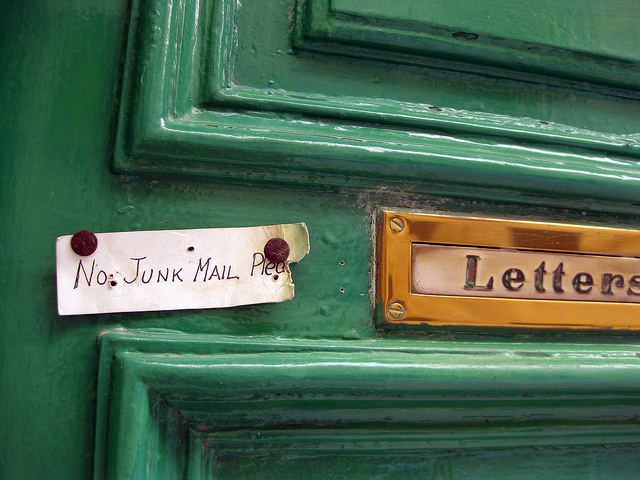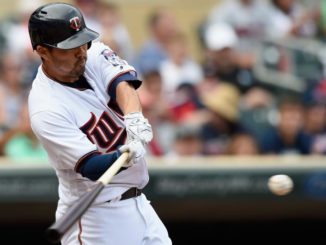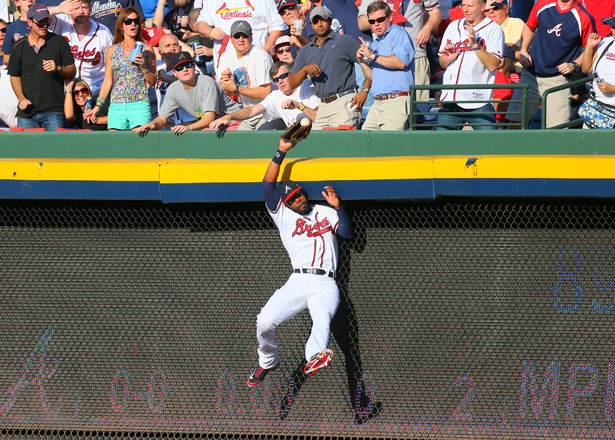Valuing Julio Teheran
When a baseball team isn’t good, and it’s July, trade rumors inevitably start firing up. The Braves aren’t good, and it’s July. Hence, the trade rumors are firing up. Arodys Vizcaino is a name that’s discussed. Jim Johnson, Jeff Francoeur, and Erick Aybar are all veterans not signed beyond the season that could garner varying degrees of interest. The most interest, however, unsurprisingly centers around starting pitcher Julio Teheran. I’ve seen numerous articles discussing whether or not the Braves should or shouldn’t trade Julio Teheran. However, should or shouldn’t isn’t the right question to be asking. If the Braves are offered Mike Trout for Teheran, there’s no debate – the trade will be accepted. If the Braves are offered Albie Lopez, Dan Uggla, and a box of rabies – the trade will be declined. That variable – what is offered – can change the answer to the question “Should Atlanta trade Julio Teheran?” from yes to no. Therefore, that’s not the question.
The question should be: “What should Atlanta’s price for Julio Teheran be?” There’s no perfect way to answer that. I’m going to answer it one way. There are others, but this is my way.
The first thing you look at when valuing a player is team control. Is the player a free agent at the end of the year, or is he signed for several years down the road? Teheran falls into the latter category. He’s signed through 2019 with a 2020 team option. That gives a prospective buyer nearly 4 1/2 years of team control over Julio Teheran. He’s more than a rental.
The next question is how much value Teheran will provide over those 4 1/2 years. Here are his year by year PECOTA WAR projections from Baseball Prospectus:
2016 (rest of season): 0.8
2017: 2.2
2018: 2.3
2019: 2.2
2020: 1.9
I’m going to adjust these numbers a bit and here’s why: Atlanta has the leverage in any Teheran trade talks. The Braves can afford to be a tad optimistic on him – the team is under no pressure to trade him, and there’s a reasonable argument that Teheran could be part of the next Atlanta playoff team. At the same time, a team trading for Teheran is going to be a bit optimistic about him at the same time. They’re not acquiring Teheran to pitch like Eric Stults. If you’re buying Teheran at his peak value, you are expecting him to continue to provide it. I’m just going to round all these up to the nearest half win, which gives us totals of 1.0, 2.5, 2.5, 2.5, and 2.0. That’s a total of 10.5 WAR over the course of the deal. If that seems a bit pessimistic, understand that projections account for injury risk and sudden decline, two things that strike pitchers suddenly and unforgivingly (RIP, Jair Jurrjens).
Now, how do we put a price on WAR? Teams already have answered this to an extent. WAR isn’t a perfect statistic by any means, but it is the best all-encompassing one that we currently have, and if you line up WAR projections with some major free agent deals, you can see that there’s some correlation. It’s not a pointless exercise. So back to that price. Fangraphs estimates that teams currently spend about $8M per win on the free agent market. However, that’s all teams. To the Braves, a win is just a victory – a feel good moment in a season of humility. To a team in a pennant race, a win is much more important. It might be the difference between winning the division and playing in the Wild Card game. It might be the difference between the Wild Card game and going home and watching the playoffs with Atlanta. To a contending team, I’m not sure what the actual price should be, but I’m going to suggest the Braves set it at $10M per win. I took the same approach in my recent Bud Norris trade article. That $10M/win only applies to this season, though. If Atlanta trades Teheran to the Astros, we only know that he means more to Houston in 2016. By 2017, the Astros may not be a contender, and the Braves may be. Also, I’m going to introduce some rudimentary inflation here; Fangraphs estimates usually include about a $0.2M increase in WAR valuation from year to year, so I will as well.
Using all that, here’s what we have:
2016: 1.0 WAR X $10M = $10M
2017: 2.5 WAR X $8.2M = $20.5M
2018: 2.5 WAR X $8.4M = $21.0M
2019: 2.5 WAR X $8.6M = $21.5M
2020: 2.0 WAR X $8.8M = $17.6M
If Teheran were a free agent, I think this is a pretty reasonable contract expectation, at least in terms of average annual value. He’d get more total years on the open market, but if I told you Teheran signed a 4 year, $80.6M deal as a free agent, I don’t think anyone would really bat an eye at it. Mike Leake got 5 years and $80M last offseason. This valuation for Teheran is about right.
So, now that we have Teheran’s player value estimated at $90.6M, what is the cost? Teams have budgets, of course, and even though adding Teheran would help every team in the majors, paying Teheran would inhibit their ability to pay other, potentially better players. If Teheran were guaranteed over $90.6M over the next 4 1/2 seasons, he’d probably be difficult to trade. Turns out he’s not anywhere close to that. Here are his salaries:
2016 (remaining): $1.5M
2017: $6.3M
2018: $8.0M
2019: $11.0M
2020 (team option): $12.0M ($1M buyout)
If the option is picked up, and you have to think teams trading for Teheran are intending to pick it up, that’s a total of $38.8 million. Against a value of $90.6 million, that’s a tremendous bargain. I estimate that Teheran has a surplus trade value of $51.8 million.
What to Demand
This is really up to the Braves, but the Braves need to walk away with $51.8M in prospect value. Using an old Beyond the Boxscore article as a framework, and updated to account for inflation, here are my present day prospect valuations:
Top 10 Hitter: $41.8M
#11-25 Hitter: $28.7M
#26-50 Hitter: $26.8M
#51-75 Hitter: $16.2M
#76-100 Hitter: $14.3M
Top 10 Pitcher: $19.4M
#11-25 Pitcher: $18.2M
#26-50 Pitcher: $17.2M
#51-75 Pitcher: $13.8M
#76-100 Pitcher: $11.2M
For deeper prospects, SB Nation’s prospect guru John Sickels gives grades to many prospects that aren’t ranked on national top 100 lists. Here’s the estimated value for those grades:
“B” Pitchers: $8.4M
“B” Hitters: $6.3M
“C” Pitchers 22 & younger: $2.4M
“C” Pitchers 23 & older: $1.7M
“C” Hitters 22 & younger: $0.8M
“C” Hitters 23 & older: $0.6M

If you want to make your own trade ideas, go pull up a top 100 list from the preseason (or MLB’s active one) and start mixing and matching. Here are a few.
Boston wants Teheran? Yoan Moncada ($41.8) + OF Luis Alexander Basabe ($6.3M) + LHP Williams Jerez ($1.7M) + LHP Trey Ball ($2.4M).
The Cubs? SS Gleyber Torres ($28.7) + C Wilson Contreras ($26.8), with Atlanta throwing in someone like Jim Johnson.
Rangers come calling? 3B Joey Gallo ($41.8M) + RHP Luis Ortiz ($8.4M) + LHP Andrew Faulkner ($1.7).
The possibilities are endless! I’m fond of any trade that gets Atlanta someone named Williams Jerez, but there are many deals that would work.
This isn’t an exact science, of course. Everything here is an estimation, but I think it’s a good start for suggesting trades and creating realistic expectations. Teheran, due to his contract, is an incredibly valuable asset to have. Atlanta is apparently well aware of this; reports indicate the team is asking for a huge return, likely on par with some of the trades I mentioned above. Atlanta is saying it isn’t trading Teheran. Other teams are saying Teheran won’t be dealt. Let’s not fool ourselves into thinking the Atlanta front office has made Teheran untouchable. It simply means that they realize his gargantuan value to any team that acquires him, and they’re asking for a gargantuan return, as they should. The bigger a trade gets, the harder it is to complete. When the clock runs out on the 2016 trading deadline, I expect Julio Teheran to be an Atlanta Brave. If he isn’t, however, let’s hope the team valued him as I did. If so, the return will be very big and very exciting.





Good article. I think trading Tehran for less than 60 mil in value would be wasting leverage. Of course, if they dont trade him he will surely suffer a carrer ender next spring.
To have Williams Jerez and Williams Perez. That would be fun!
We already have two Brandon White’s, ARE YOU NOT ENTERTAINED!!!! 😛
A little too simplistic at the end, there. Moncada, as number one overall, is worth $10MM more than the number 10 guy is. Yet, you value them the same at $41.8MM. Moncada would be a fair trade, straight up, for just about anyone not named Trout, Kershaw or Harper.
I would have liked to have seen the BoSox make a deal for Teheran, instead of Pomeranz. There is just a much better history on which to judge Julio’s past performance — to give a better idea of what you are buying. I don’t think we would have made Moncada available for Teheran. We would have probably offered a rich package, surrounding Benintendi as the centerpiece. Maybe something like Benintendi, Devers, Basabe and Ball.
I would like something with the Astros centered around Bregman + some. Giving us a future of Bregman, Swanson, Albies, and Freeman infield and that would be something to be excited about!